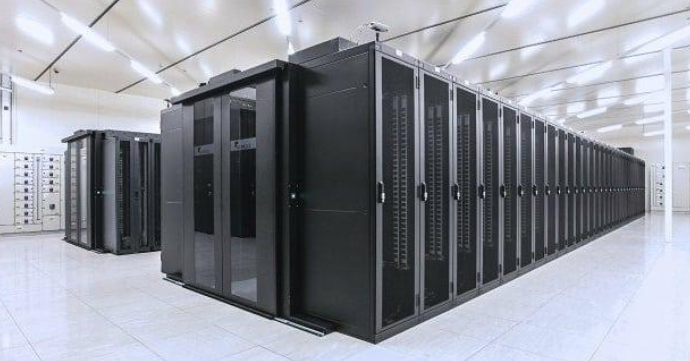Current Situation and Future Development Trends of Data Centers
2025年07月30日
In today's digital economy boom, data centers stand as the backbone of our digital world—their development directly shapes how nations and regions compete in this tech-driven era. We've seen them grow exponentially in recent years, but this expansion brings both opportunities and growing pains. Let's take a closer look at where they stand now and where they're headed.

I. Surge in Scale: The "Expanding" Current Situation of Data Centers
(1) Significant Growth in Global Data Center Scale
Data centers have been growing at a remarkable pace worldwide. By 2023, there were around 25.5 million data center racks globally, with millions more added each year. The market size hit
82.2billionin2023andisontracktosurpass
90 billion in 2024. This rapid expansion isn't just a number—it's a clear sign that data centers are becoming more critical than ever in our increasingly digital lives.
(2) Rapid Development of China's Data Center Market
China's data center sector is booming. In 2023, its market reached about 240.7 billion yuan, up 26.68% from the previous year, and is expected to hit 304.8 billion yuan in 2024. When it comes to racks, by the end of 2023, the three major telecom firms had 970,000 public internet data center racks, adding 152,000 over the year. Nationwide, there are over 8.1 million standard racks in use, with total computing power hitting 230 EFLOPS. This growth mirrors China's push toward digital transformation and its ambition to lead in the global digital economy.
(3) Ultra-large-scale Data Centers Becoming a Trend
Big is definitely in when it comes to data centers. These massive facilities, with 5,000+ servers, are like digital powerhouses for storing and processing data. Tech giants such as Amazon, Google, and Microsoft are pouring money into them to keep up with demand. Microsoft, for instance, plans to spend
3.2billioninSwedenandnearly
3.5 billion in Germany on AI and cloud facilities. In China, the "Eastern Data and Western Computing" initiative is driving big internet companies to build these mega-centers, helping to distribute computing power more efficiently. These giants are essential for handling the flood of data and complex computing tasks that come with our digital age.
II. Numerous Challenges: Hidden Worries Under Scale Expansion
(1) Rising Energy Consumption: Pressure from the "Electric Tiger"
Data centers are huge energy hogs. The U.S. Department of Energy thinks their electricity use could nearly triple by 2028, jumping from around 100 billion kWh to almost 300 billion kWh—that's as much as several big cities use in a year. China faces similar issues. In Zhangjiakou, data centers went from using 6.8% of the city's electricity in 2019 to 20.1% in 2023, overtaking the steel industry. From January to July this year, China's internet data services used 33.1% more electricity than the year before. This isn't just costly for businesses; it strains energy supplies. And with global goals to cut carbon emissions, data centers' high energy use is a major problem. Finding ways to use less energy and make better use of what they do use is more urgent than ever.
(2) Resource Imbalance: Supply and Demand Dilemma Between East and West
As data centers grow, a gap has opened between east and west China. Eastern regions like North, East, and South China have lots of data center racks and use them heavily—over 65% in those areas. But the northwest only uses 33.9%, well below the national average of about 50%. It's a case of "east hot, west cold": the east needs more data centers but has limited land and energy, while the west has the resources but less demand, leaving some centers underused. China's "Eastern Data and Western Computing" project is trying to fix this, balancing out resources and needs across the country.
(3) Technical Difficulties: Constraints on Data Center Collaboration and Performance
AI needs fast, smooth connections—even a little delay can waste 30% of training time waiting for data. But different data centers often use different setups, data formats, and standards, making it hard to share data and work together. This holds back not just collaboration but also high-performance tasks like AI training. To move forward, we need faster, more responsive networks and common standards that let data centers work together seamlessly.
III. Technological Innovation: Key to Addressing Challenges
(1) Heterogeneous Computing: Breaking Through Computing Power Bottlenecks
Big AI models, with over a trillion parameters like GPT-5, are pushing traditional computer setups to their limits. By 2025, data centers will likely switch to a "CPU + GPU + DPU + ASIC" mix—heterogeneous computing. AI-specific chips will take center stage, being more efficient and using less energy. NVIDIA's next H100, for example, will use 3nm technology and pack over 20 PFLOPS of power. Chips like Google's TPU and Huawei's Ascend will use new designs to boost memory speed by over 5 times. Super-fast connections will be key too—NVIDIA's NVLink 4.0 and Intel's CXL 3.0 will hit 1TB/s, letting thousands of GPUs work together. And by pooling GPU resources into a virtual "power bank," businesses can use them as needed, upping efficiency from 30% to 80% and cutting AI training costs by 60%. This mix of technologies will give data centers the power to handle tomorrow's AI needs.
(2) Liquid Cooling Technology: Ongoing Cooling Revolution
Cooling is a big energy drain—IDC says 40% of data center energy goes to it, and by 2025, data centers could use 4% of the world's electricity. Traditional air cooling can't keep up with cabinets using 30kW or more, so liquid cooling is taking over. Cold plate systems, easy to set up and cheap, will be common. Intel, Inspur, and Lenovo are all on board, and Alibaba's "Kylin" system uses custom cold plates to cool CPUs and GPUs without major changes, costing less than 30% to install. For even more power, immersion cooling—using fluids like 3M's fluorinated liquids—can handle 100kW per cabinet and cut energy use so much that PUE (a efficiency measure) drops below 1.05. Google's Oklahoma data center uses this, slashing cooling energy by 90%. By 2025, more new smart computing centers will use immersion cooling, making data centers greener and more efficient.
(3) Edge Computing: Building a New "Cloud - Edge - End" Architecture
Things like self-driving cars and smart factories need instant responses—faster than what distant data centers can provide. That's where edge computing comes in, processing data closer to where it's generated. With more IoT devices and 5G, this market is booming. Gartner thinks 75% of business data will be processed at the edge by 2025, with three times as many edge data centers as traditional ones. These edge centers will be tiny—Qualcomm's Cloud AI 100 chips fit into set-top box-sized servers at cell towers, with delays under 2ms. They'll also fix themselves—Facebook's "Edge Autopilot" handles 80% of problems without people. And they'll work with big data centers: edge nodes train AI models locally, then send just the key info to the cloud, saving 90% of bandwidth and keeping data private. This "cloud-edge-end" setup will make data processing faster and more efficient in all sorts of new ways.
IV. Future Outlook: Green, Intelligent and Collaborative Development
(1) Green Data Centers Becoming Mainstream
With the push for lower carbon emissions, green data centers are the future. They'll use energy-saving gear, smart designs, and more renewable energy. China has been leading the way, naming 246 green data centers since 2015 and working on a sixth batch. A new national standard, out June 1, sets rules for energy use, green design, buying, maintenance, and services. In Ulanqab, the first project linking data centers directly to green power—with 300,000 kW of new energy and 25,000 planned racks—is up and running. Going green won't just be good for the planet; it'll be a selling point. Soon, everyone will want to use IT services from green data centers.
(2) Intelligent Operation and Maintenance Improving Efficiency
Data centers are getting too complex for old-style, manual upkeep. By 2025, AIOps—AI-powered operations—will get even smarter, using cognitive intelligence. IDC says this could cut labor costs by 40% and fix problems 75% faster. Predictive maintenance will spot hard drive issues 7 days early, 98% of the time, using special AI models. It'll also figure out why problems happen, not just fix them, and make decisions on its own, using data to run things smoothly. Smart upkeep will make data centers more reliable, cheaper to run, and more efficient.
(3) Collaborative Development to Build an Ecosystem
Data centers won't work alone anymore—they'll team up with other industries, regions, and tech systems to create a big ecosystem. They'll partner with chip makers to build better processors, with equipment firms for energy-saving servers, and with software developers for smarter management tools. Across China, the "Eastern Data and Western Computing" project will let eastern centers handle quick tasks and western ones take on energy-heavy work. They'll also work with cloud computing, edge computing, and IoT—clouds provide flexible power, edges process data fast, and IoT connects all the devices. This teamwork will make the digital economy stronger than ever.
Data centers are more important than ever in our digital world. They're growing fast, but that growth brings energy, resource, and tech challenges. Luckily, new technologies like heterogeneous computing, liquid cooling, and edge computing are pointing the way to greener, smarter, more connected centers. As they evolve, they'll keep supporting the digital economy and driving progress and innovation for years to come.
previous page
next page
previous page
next page
Recommended news















